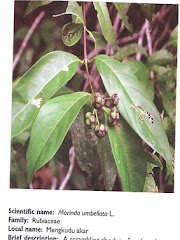world's tropical forests, which circle the globe, are interestingly diverse. Ranging from the steamy jungles of the rain forests to the dry forests and savannas, they provide habitat for millions of species of plants and animals. Once covering some 15.3 billion acres (6.2 billion ha), these tropical forests have been reduced through cutting and clearing by 210 million acres (85 million ha) between 1985 and 1990. All types of tropical forests are defined and their products and benefits to the environment are presented and discussed. Modern forest practices are shown as a means of halting forest destruction while still providing valuable forest products and protecting and preserving the habitats of many endangered species of plants and wildlife. The Luquillo Experimental Forest is presented as a possible model to exemplify forestry practices and research that could manage and ultimately protect the tropical forests throughout the world.
INTRODUCTION
The world's tropical forests circle the globe in a ring around the Equator They are surprisingly diverse, ranging from lush rain forests to dry savannas and containing millions of species of plants and animals (fig. 1). Tropical forests once covered some 15.3 billion acres (6.2 billion ha). In recent times, however, they have been cut at a rapid rate to make room for agriculture and to obtain their many valuable products. Between 1985 and 1990, 210 million acres (85 million ha) of tropical forests were destroyed.
This guide shows how modern forest practices can help stem the tide of forest destruction while providing valuable forest products for people. The tropical forests of Puerto Rico, which were abused for centuries, were badly depleted by the early 1900's. Widespread abandonment of poor agricultural lands has allowed natural reforestation and planting programs to create a patchwork of private, Commonwealth, and Federal forests across the land (fig. 2). The most frequent example in this publication is the Luquillo Experimental Forest, which could be a model for protecting and managing tropical forests worldwide.
TYPES OF TROPICAL FORESTS
About half of all the world's forests are in the Tropics, the area between the Tropic of Cancer and the Tropic of Capricorn. This region may be best known for its rain forests - lush, steamy jungles with towering trees, epiphytes, and dense under stories of smaller trees, shrubs, and vines.
Tropical forests are surprisingly diverse. In addition to rain forests, there are mangroves, moist forests, dry forests, and savannas. Such classifications, however, give only a slight indication of the diversity of tropical forests. One study by the Food and Agriculture Organization (FAO) of the United Nations, which considered 23 countries in tropical America, 37 in tropical Africa, and 16 in tropical Asia, identified dozens of types of tropical forests: open and closed canopy forests, broadleaved trees and conifer forests , closed forests and mixed forest grasslands, and forests where agriculture has made inroads.
Rain Forests
The largest remaining areas of tropical rain forests are in Brazil, Congo, Indonesia, and Malaysia. Precipitation generally exceeds 60 inches (150 cm) per year and may be as high as 400 inches (1000 cm).
Mangrove forests grow in the swampy, intertidal margin between sea and shore and are often considered part of the rain forest complex. The roots of mangrove trees help stabilize the shoreline and trap sediment and decaying vegetation that contribute to ecosystem productivity (fig. 3).
Dry Forests
Large areas of tropical dry forests are found in India, Australia, Central and South America, the Caribbean, Mexico, Africa, and Madagascar. Dry forests receive low rainfall amounts, as little as 20 inches (50 cm) per year, and are characterized by species well adapted to drought
Savanna is a transitional type between forest and grassland. Trees are often very scattered and tend to be well adapted to drought and tolerant of fire and grazing. If fire is excluded, trees eventually begin to grow and the savanna is converted to dry forest. With too much fire or grazing, dry forest becomes savanna (fig. 4). This vegetation type has fewer species of trees and shrubs but more grasses and forbs than other forest types in the Tropics.
VALUE OF TROPICAL FORESTS
All forests have both economic and ecological value, but tropical forests are especially important in global economy. These forests cover less than 6 percent of the Earth's land area, but they contain the vast majority of the world's plant and animal genetic resources. The diversity of life is astonishing. The original forests of Puerto Rico, for example, contain more than 500 species of trees in 70 botanical families. By comparison, temperate forests have relatively few. Such diversity is attributed to variations in elevation, climate, and soil, and to the lack of frost.
There is also diversity in other life forms: shrubs, herbs, epiphytes, mammals, birds, reptiles, amphibians, and insects. One study suggests that tropical rain forests may contain as many as 30 million different kinds of plants and animals, most of which are insects (fig. 5).
Wood and Other Products
Tropical forests provide many valuable products including rubber, fruits and nuts, meat, rattan, medicinal herbs, floral greenery, lumber, firewood, and charcoal. Such forests are used by local people for subsistence hunting and fishing. They provide income and jobs for hundreds of millions of people in small, medium, and large industries.
Tropical forests are noted for their beautiful woods (fig. 6). Four important commercial woods are mahogany, teak, melina, and okoume. Honduras mahogany (Swietenia macrophylla), grows in the Americas from Mexico to Bolivia. A strong wood of medium density, mahogany is easy to work, is long lasting, and has good color and grain. It is commonly used for furniture, molding, paneling, and trim. Because of its resistance to decay,
Tectona grandis...Jati...its wood has medium density, is strong, polishes well, and has a warm yellow-brown color. Also prized for resistance to insects and rot, teak is commonly used in cabinets, trim, flooring, furniture, and boats (fig. 7). Melina (Gmelina arborea) grows naturally from India through Vietnam. Noted for fast growth, melina has light colored wood that is used mainly for pulp and particleboard, matches and carpentry. Okoume (Aucoumea klaineana) is native to Gabon an the Congo in west Africa. A large fast-growing tree, the wood has mod erately low density, good strength-to density ratio, and low shrinkage during drying. It is commonly use( for plywood, paneling, interior fur niture parts, and light construction.
Other Economic Values
Tropical forests are home for tribal hunter-gatherers whose way of life has been relatively unchanged for centuries. These people depend on the forests for their livelihood. More than 2.5 million people also live in areas adjacent to tropical forests. They rely on the forests for their water, fuelwood, and other resources and on its shrinking land base for their shifting agriculture. For urban dwellers, tropical forests provide water for domestic use and hydroelectric power. Their scenic beauty, educational value, and opportunities for outdoor recreation support tourist industries.
Many medicines and drugs come from plants found only in tropical rain forests. Some of the best known are quinine, an ancient drug used for malaria; curare, an anesthetic and muscle relaxant used in surgery; and rosy periwinkle, a treatment for Hodgkin's disease and leukemia. Research has identified other potential drugs that may have value as contraceptives or in treating a multitude of maladies such as arthritis, hepatitis, insect bites, fever, coughs, and colds. Many more may be found.
In addition, many plants of tropical forests find uses in homes and gardens: ferns and palms, the hardy split-leaf philodendron, marantas, bromeliads, and orchids (fig. 8), to name just a few.
Environmental Benefits
Tropical forests do more than respond to local climatic conditions; they actually influence the climate. Through transpiration, the enormous number of plants found in rain forests return huge amounts of water to the atmosphere, increasing humidity and rainfall, and cooling the air for miles around. In addition, tropical forests replenish the air by utilizing carbon dioxide and giving off oxygen. By fixing carbon they help maintain the atmospheric carbon dioxide levels low and counteract the global "greenhouse" effect.
Forests also moderate stream flow. Trees slow the onslaught of tropical downpours, use and store vast quantities of water, and help hold the soil in place. When trees are cleared, rainfall runs off more quickly, contributing to floods and erosion.
DEFORESTATION
Before the dawn of agriculture approximately 10,000 years ago, forests and open woodland covered about 15.3 billion acres (6.2 billion ha) of the globe. Over the centuries, however, about one-third of these natural forests has been destroyed. According to a 1982 study by FAO, about 27.9 million acres (11.3 million ha) of tropical forests are cut each year-an area about the size of the States of Ohio or Virginia. Between 1985 and 1990, an estimated 210 million acres (85 million ha) of tropical forests were cut or cleared. In India, Malaysia, and the Philippines, the best commercial forests are gone, and cutting is increasing in South America. If deforestation is not stopped soon, the world will lose most of its tropical forests in the next several decades.
Reasons for Deforestation
Several factors are responsible for deforestation in the Tropics: clearing for agriculture, fuelwood cutting, and harvesting of wood products. By far the most important of these is clearing for agriculture. In the Tropics, the age-old practice of shifting, sometimes called "slash-and-burn," agriculture has been used for centuries. In this primitive system, local people cut a small patch of forest to make way for subsistence farming. After a few years, soil fertility declines and people move on, usually to cut another patch of trees and begin another garden.
In the abandoned garden plot, the degraded soil at first supports only weeds and shrubby trees. Later, soil fertility and trees return, but that may take decades. As population pressure increases, the fallow (rest) period between cycles of gardening is shortened, agricultural yields decrease, and the forest region is further degraded to small trees, brush, or eroded savanna.
Conversion to sedentary agriculture is an even greater threat to tropical forests. Vast areas that once supported tropical forests are now permanently occupied by subsistence farmers and ranchers and by commercial farmers who produce sugar, cocoa, palm oil, and other products.
In many tropical countries there is a critical shortage of firewood. For millions of rural poor, survival depends on finding enough wood to cook the evening meal. Every year more of the forest is destroyed, and the distance from home to the forest increases. Not only do people suffer by having to spend much of their time in the search for wood, but so does the land. Damage is greatest in dry tropical forests where firewood cutting converts forests to savannas and grasslands.
The global demand for tropical hardwoods, an $8-billion-a-year industry, also contributes to forest loss. Tropical forests are usually selectively logged rather than clear-cut. Selective logging leaves the forest cover intact but usually reduces its commercial value because the biggest and best trees are removed. Selective logging also damages remaining trees and soil, increases the likelihood of fire, and degrades the habitat for wildlife species that require large, old trees-the ones usually cut. In addition, logging roads open up the forests to shifting cultivation and permanent settlement.
In the past, logging was done primarily by primitive means-trees were cut with axes and logs were moved with animals such as oxen. Today the use of modern machinery--chain saws, tractors, and trucks -makes logging easier, faster, and potentially more destructive.
Endangered Wildlife
Forests are biological communities-complex associations of trees with other plants and animals that have evolved together over millions of years. Because of the worldwide loss of tropical forests, thousands of species of birds and animals are threatened with extinction. The list includes many unique and fascinating animals, among them the orangutan, mountain gorilla, manatee, jaguar, and Puerto Rican parrot. Although diverse and widely separated around the globe, these specles have one important thing in common. They, along with many other endangered species, rely on tropical forests for all or part of their habitat.
Orangutans (Pongo pygmaeus) are totally dependent on small and isolated patches of tropical forests remaining in Borneo and Sumatra, Indonesia. Orangutans spend most of their time in the forest canopy where they feed on leaves, figs and other fruit, bark, nuts, and insects. Large trees of the old-growth forests support woody vines that serve as aerial ladders, enabling the animals to move about, build their nests, and forage for food. When the old forests are cut, orangutans disappear.
The largest of all primates, the gorilla, is one of man's closest relatives in the animal kingdom. Too large and clumsy to move about in the forest canopy, the gorilla lives on the forest floor where it forages for a variety of plant materials. Loss of tropical forests in central and west Africa is a major reason for the decreasing numbers of mountain gorillas (Gorilla gorilla). Some habitat has been secured, but the future of this gentle giant is in grave danger as a result of habitat loss and poaching.
The jaguar (Leo onca), a resident of the Southwestern United States and Central and South America, is closely associated with forests. Its endangered status is the result of hunting and habitat loss.
The Puerto Rican parrot (Amazona vittata), a medium-sized, green bird with blue wing feathers, once inhabited the entire island of Puerto Rico and the neighboring islands of Mona and Culebra. Forest destruction is the principal reason for the decline of this species. Hunting also contributed. Today, only a few Puerto Rican parrots remain in the wild and their survival may depend on the success of a captive breeding program (fig. 9).
In addition to species that reside in tropical forests year round, others depend on such forests for part of the year. Many species of migrant birds journey 1,000 miles or more between their summer breeding grounds in the north and their tropical wintering grounds. These birds are also threatened by tropical forest destruction.
THE PRACTICE OF FORESTRY
Forestry-loosely defined as the systematic management and use of forests and their natural resources for human benefit-has been practiced for centuries. Most often, forestry efforts have been initiated in response to indiscriminate timber cutting that denuded the land and caused erosion, floods, or a shortage of wood products.
Ancient Forestry Practices
In ancient Persia (now Iran), forest protection and nature conservation laws were in effect as early as 1,700 B.C. Two thousand years ago the Chinese practiced what they called "four sides" forestry-trees were planted on house side, village side, road side, and water side. More than 1,000 years ago, Javanese maharajahs brought in teak and began to cultivate it. In the African Tropics, agroforestry (growing of food crops in association with trees) has been practiced for hundreds of years.
In the Yucatan Peninsula of southern Mexico, the ancient Mayas cultivated fruit and nut trees along with such staples as corn, beans, and squash. Bark, fibers, and resin were obtained from plants grown in fields, kitchen gardens, and orchards. Early in their civilization, the Mayas practiced slash-and-burn agriculture. As their population grew, they found more efficient methods of growing crops. They terraced hillsides, learned how to decrease the time between "rotations" of agricultural land with native forests, dug drainage channels and canals to move water to and from cultivated areas, and filled in swampland to plant crops.
The agricultural sophistication of the Mayas enabled their civilization to grow and flourish. What brought about their decline about A.D. 820 is not fully known, but some believe that as their society developed, the Mayas made unsustainable demands on their environment.
Relatively little is known about tropical forestry before the mid1800's in most places. At that time, the European colonial empiresnotably the Dutch, English, and Spanish-brought modern forest management practices to Indonesia, India, Africa, and the Caribbean. Centers for forestry and forestry research were established, and more careful records were kept.
Sustainable Forestry
Modern forestry has its basis in 18th-century Germany. Like the Chinese and the Mayan forest practices, German forestry is essentially agricultural. Trees are managed as a crop. Two concepts are important: renewability and sustainability. Renewability means that trees can be replanted and seeded and harvested over and over again on the same tract of land in what are known as crop "rotations." Sustainability means that forest harvest can be sustained over the long term. How far into the future were foresters expected to plan? As long as there were vast acres of virgin (original) forests remaining, this question was somewhat academic. Today, however, sustainability is a vital issue in forestry. Most of the world's virgin forests are gone, and people must rely more and more on second- growth or managed forests. Perhaps we now face, as never before, the limits to long-term productivity.
In the German forest model, forestry is viewed as a continual process of harvest and regeneration. Harvest of wood products is a goal, but a forester's principal tasks are to assure long-term productivity. That is achieved by cutting the older, mature, and slow-growing timber to make way for a new crop of young, fast-growing trees.
Harvest-Regeneration Methods
Three examples of timber harvest-regeneration methods (silvicultural systems) illustrate how foresters manage stands to produce timber on a sustained basis.
Selection
Individual trees or small groups of trees are harvested as they become mature. Numerous small openings in the forest are created in which saplings or new seedlings can grow. The resulting forest has a continuous forest canopy and trees of all ages. Such systems favor slow-growing species that are shade tolerant.
Clearcutting
In clearcutting, an entire stand of trees is removed in one operation. From the forester's point of view, clearcutting is the easiest way to manage a forest-and the most economical. Regeneration may come from sprouts on stumps, from seedlings that survive the logging operation, or from seeds that germinate after the harvest. If natural regeneration is delayed longer than desired, the area is planted or seeded.
Clearcutting systems are often used to manage fast-growing species that require a lot of light. Resulting stands are even aged because all the trees in an area are cut-and regenerated-at the same time. Clearcutting has become controversial in recent years because it has the potential to damage watersheds and because it tends to eliminate species of wildlife dependent on old growth trees. If clearcuts are kept small and the cutting interval is long enough, however, biological diversity may not be impaired.
Shelterwood
In shelterwood systems, the forest canopy is removed over a period of years, usually in two cuttings. After the first harvest, natural regeneration begins in the understory. By the time the second harvest is made, enough young trees have grown to assure adequate regeneration. Shelterwood systems favor species that are intermediate in tolerance to shade. Such systems are difficult to use successfully and are the least used of the three silvicultural methods described.
Multiple-Use Forestry
Gifford Pinchot, the first Chief of the U.S. Forest Service, was also this country's first professional forester. Pinchot advocated the use of forest resources-all resources, not just timber-for human benefit. Pinchot was a strong and charismatic leader, and his ideas helped shape the course of forestry in the United States.
Pinchot had a vocal opponent in John Muir, a young naturalist from California who believed that public lands should be preserved rather than used. Eventually Muir and Pinchot became rivals for public approval. Oddly enough, there was no
loser in this early conservation battle. Muir's preservation ethic became embodied in the philosophy of the National Parks, and Pinchot's concept of wise use became the guiding principle of the National Forests.
National Forests are still managed under the concepts of multiple use and sustained yield. The dominant uses of National Forests are considered to be wood, water, wildlife, forage (for domestic cattle and wildlife), and recreation. Extraction of minerals and other valuable products is also considered a legitimate use of National Forests. Because Pinchot's philosophy left room for the "highest and best use" of a given area, the U.S. National Forests now include a wilderness system of more than 32 million acres (13 million ha) in which timber harvest is not allowed.
Today it is generally recognized that most, if not all, nondestructive uses of forest are valid. Some areas may be set aside as parks; others for wildlife habitat or as wilderness. Still others will be managed for timber harvest or multiple benefits. Today, conflicts arise primarily over where these different uses will be dominant. In the National Forests, such decisions are made through a land-use planning process in which the public has ample opportunities for input and involvement.
FORESTRY RESEARCH
At the turn of the century, very little was known about the world's native forests or how to manage them. In the United States, foresters were quick to recognize the value of information about forests and a branch of research was established in the Forest Service in 1915. Early research was done primarily in support of reforestation efforts, but, as forestry grew in size and complexity, so did the research.
Today, the USDA Forest Service has six regional experiment stations located in important forest regions. Each experiment station has several field laboratories generally with specialized assignments for a geographic region or a specific subject area, and numerous sites for field research. In addition, the Forest Products Laboratory in Madison, WI, serves as a nationwide center for research and development of new technology relating to wood , including tropical woods. Two laboratories are dedicated exclusively to tropical forest research: the International Institute of Tropical Forestry in Puerto Rico and the Institute of Pacific Islands Forestry in Hawaii.
Research is vital for modern forest management, which is information intensive. Today's foresters require vast quantities of data and a knowledge of ecology: they must understand not only the parts of ecosystems but how different parts of the environment interact. Scientific investigations are conducted in support of all kinds of forestry activities: silviculture, forest insect and disease control, wildlife habitat management, fire prevention and control, range and watershed management, forest products utilization, forest survey, reforestation, ecology, and economics.
TROPICAL FORESTRY
In the past, timber harvest in the Tropics has seldom been followed by regeneration. Conversion to agriculture is often permanent or results in soil erosion. Timber harvest contracts have usually been short term and have provided little or no incentive for timber companies to replant. So little reforestation has been done in the Tropics that many people believe these forests cannot be restored. However, there are many examples of successful reforestation in India, Indonesia, and the Caribbean.
In the Tropics, as elsewhere, forestry is a mixture of modern innovations and ancient techniques borrowed from local tradition. Plantation forestry is common. Forest reserves have been established for timber harvest, wildlife habitat, scenery, outdoor recreation, or watershed protection. And in the Tropics, agroforestry-tree growing combined with agricultural cropping-is much more common than elsewhere
Plantation Forestry
In the Tropics, trees are often planted and grown in plantations for wood production. Often, many species must be tried to determine which will grow best (fig. 10). Plantations must also be supported by major investments in forest management and research. Forest nurseries must be established, and planting techniques and cultural practices (spacing and thinning, pruning, fertilization, insect and disease control, and genetic improvement) must be developed.
Extensive pine plantations have been established in the moist Tropics, mainly in South Africa and Australia. Species most often planted include Caribbean pine (Pinus caribaea), ocote pine (P. oocarpa), slash pine (P. elliottii), and benguet pine (P. kesiya). Pines are popular plantation trees because they are generally fast growing, have good survival rates, and are adapted to a wide variety of environments, including degraded forest sites.
Eucalypts, including species such as Eucalyptus grandis, E. deglupta, E. tereticornis, E. globulus, and E. camaldulensis are favored for the same reasons. Eucalypts are commonly grown for pulp, fuel, and lumber. Other species commonly planted include teak (Tectona grandis), Honduras mahogany (Swietenia macrophylla), melina (Gmelina arborea) beefwood (Casuarina equisetifolia), and Mexican cypress (Cupressus lusitanica).
Forest Reserves
There are many reasons for establishing forest reserves in the Tropics. They can restore watersheds and wildlife habitat, improve scenic beauty and opportunities for outdoor recreation, and produce wood and other products for local use and export. Many forest products contribute to the sustenance and income of local people: wildlife and fish, firewood, rubber, fruits and nuts, rattan, medicinal herbs, floral greenery, and charcoal.
Perhaps the most famous of these reserves is the 5,600 square mile (14,500 k squared) Serengeti National Park in Tanzania. With its vast herds of grazing ungulates (hoofed animals) and predators, including several endangered species, the Serengeti is a showcase of a savanna ecosystem that has long been protected and managed for wildlife and other natural resources (fig. 11). Although plagued with poachers, the Serengeti promotes the cause of wildlife conservation to the many thousands of "ecotourists" who pay to experience nature each year.
Another type of forest reserve is the "extractive" reserve, which is dedicated to the production of useful products. Large reserves of this type have been established recently in Brazil. Local residents use them for tapping rubber, for gathering fruits and nuts, for hunting, and for harvesting wood on a sustained yield basis. Such uses provide a sustainable income while maintaining the ecological integrity of the forest.
Agroforestry
The practice growing of trees in combination with agricultural crops is fairly common in the Tropics. It is possible to grow food crops year around in many forested areas, and rural poor depend on this source of food as nowhere else on Earth.
Taungya System
Various systems have been developed for combining forestry with agriculture. "Taungya" is a Burmese word meaning cultivated hill plot. This system of agroforestry was developed in Europe during the Middle Ages and probably indepenently in a number of places in the Tropics. After existing forest or ground cover is removed by burning, trees are planted along with agricultural crops. Both are cultivated until the tree canopy closes. Then the area is left to grow trees, and another site is located for combined forestry agriculture.
Shade Cropping
An overstory of trees is often used to provide shade for agricultural crops. A common practice is to grow tree species such as guaba Inga vera) over coffee. In Puerto Rico, many forests developed where coffee was once grown in this manner.
Support Crops
Trees can be planted to provide support (and sometimes shade) for vine crops. Vines such as pepper and vanilla need support.
Alley Cropping
Nitrogen-fixing trees are planted in hedges in widely-space parallel rows along the contour of slopes. Food crops are grown in the "alley" between the rows. The trees add nitrogen and organic matter, protect the soil from erosion, and provide wood and animal forage.
Living Fences
Green fenceposts that will root and sprout often are planted in a closely spaced row. When they sprout, they create a "living fence" that provides shade and forage for cattle.
Windbreaks
Trees are often planted as windbreaks for agricultural crops, farms, or homesites. Such plantings can eventually contribute wood products as well as shelter. Food trees such as citrus, rubber, and mango can also provide fuel, lumber, and other wood products when they have outlived their original usefulness.
Back to Top
NEW DIRECTIONS IN TROPICAL FORESTRY
The conservation issues of the past seem simple compared with those of today. As we move toward the 21st century, human societies are concerned with global warming, deforestation, species extinction, and rising expectations. Growing populations must be fed, clothed, and sheltered, and people everywhere want higher standards of living.
Global Warming
Warming of the earth's atmosphere is a major environmental issue. Air pollution, deforestation, and widespread burning of coal, oil, and natural gas have increased atmospheric concentrations of carbon dioxide, methane, nitrous oxide, and chlorofluorocarbons. These gases trap heat from the sun and prevent it from radiating harmlessly back into space. Thus, the 64 greenhouse" or warming effect is created.
Because of natural variations in climate, it is difficult to measure warming over large areas. Scientists agree, however, that increases in atmospheric concentrations of greenhouse gases will cause higher temperatures worldwide. Even an increase of a few degrees might cause serious melting of the polar icecaps, a gradual rise in sea level, a disruption in normal weather patterns, a possible increase in forest fires, and the extinction of species.
Role of Forests
Trees, the largest of all land plants, act as a kind of environmental "buffer" for the ecosystem they dominate. They help ameliorate the extremes of climate (heat, cold, and wind) and create an environment where large land mammals, including people, can live comfortably. Trees complement animals in the global environment. Mammals take in oxygen from the air and exhale carbon dioxide. Plants use the carbon dioxide in their growth processes, store the carbon in woody tissues, and return oxygen to the atmosphere as a waste product. This process, known as photosynthesis, is essential to life. Carbon captured from the atmosphere by photosynthesis is eventually recycled through the environment in a process known as the carbon cycle. Trees have an especially important role in the carbon cycle. Tree leaves also act as filters to remove atmospheric pollutants from the air. This effect is particularly beneficial in urban areas.
Forestry Issues
Two key issues will dominate forestry in the years ahead: (1) maintaining long-term productivity of managed forests, and (2) preventing further loss of tropical forests. Both problems will require new approaches to forest management.
Traditionally, forestry has focused on growing crops of wood in plantations or in managed natural stands. In this "agricultural mode," other benefits of forest such as watershed protection, wildlife habitat, climate moderation, and outdoor recreation, have received less attention than wood production.
Perhaps more importantly, the sustainability of the full range of forest benefits has not been measured. There is no question that trees can be grown for crops of wood in managed stands. With intensive management-short rotations, species selection, genetic improvement, fertilization, thinning, and other cultural treatments-more wood can be produced in less time than in natural forests. But for how long? And at what cost in other benefits?
As more and more of the world's original forests have been cut, the ecological value of forests has come to be more appreciated. In recent years, increased emphasis has been put on what some are calling "ecosystem management." In this model, the health and long-term stability of the forest are paramount, and timber production is considered a byproduct of good forest management rather than the principal product. In Puerto Rico, for example, wood production is a relatively minor aspect of forestry.
Since the 1930's when timber harvests were curtailed, the forests have been managed primarily for watershed protection, wildlife habitat, and outdoor recreation.
There are no easy solutions to the problem of tropical forest destruction, but most experts agree that the problems cannot be solved simply by locking up the forests in reserves. The forests are too important to local people for that to be a workable solution. There is no doubt that tropical forests will be cut. It is better for them to be cut in an ecologically sound manner than to be cleared for poor-quality farmland or wasted by poor harvest practices (fig. 12).
The only real long-term solutions are: (1) more efficient agriculture on suitable farmland, (2) efficient forestry practice including plantations, and (3) reserves to protect species and ecosystems. Many forestry experts believe that we have only begun to tap the potential for wise use of tropical forests. Many uses have yet to be fully explored. We are only starting to learn the value of tropical forests for medicines, house and garden plants, food and fiber, tourism, and natural resource education.
Back to Top
October 1997
Southern Research Station P.O. Box 2680 Asheville, NC 28802
A STUDENT GUIDE TO TROPICAL FOREST CONSERVATION
J. Louise Mastrantonio and John K. Francis (J. Louise Mastrantonio is a freelance science writer in Portland, OR)
John K. Francis is a research forester at the International Institute of Tropical Forestry, U.S. Department of Agriculture, Forest Service, Rio Piedras, PR 00928-5000, in cooperation with the University 01 Puerto Rico, Rio Piedras, PR 00936-4984.
أَلَمْ تَرَ أَنَّ اللَّهَ يُسَبِّحُ لَهُ مَنْ فِي السَّمَاوَاتِ وَالأرْضِ وَالطَّيْرُ صَافَّاتٍ كُلٌّ قَدْ عَلِمَ صَلاتَهُ وَتَسْبِيحَهُ وَاللَّهُ عَلِيمٌ بِمَا يَفْعَلُونَ Tidakkah kamu tahu bahwasanya Allah: kepada-Nya bertasbih apa yang di langit dan di bumi dan (juga) burung dengan mengembangkan sayapnya. Masing-masing telah mengetahui (cara) solat dan tasbihnya, dan Allah Amat Mengetahui apa yang mereka kerjakan. an-Nur:41
Tazkirah
Sami Yusuf_try not to cry
mu'allim Muhammad Rasulullah Sallallahu alaihi waSalam
ummi_mak_mother_ibu_Sami Yusuf
zikir Tok Guru Nik Abdul Aziz Nik Mat Mu'allimul Mursyidi
syeikh masyari afasi
ruang rindu
song
Arisu Rozah
Usia 40

Mudah mudahan diluaskan rezeki anugerah Allah
usia 40 tahun

UPM

Kuatan Pahe Darul Makmur
pemakaian serban semsa menunaikan solat_InsyaAllah ada sawaaban anugerah Allah
Rempuh halangan

Abah_menyokong kuat oengajian Ijazah UPM

usia 39 tahun

usia 23 tahun_UPM
An_Namiru

Ijazah Pengurusan Hutan UPM

General Lumber_Nik Mahmud Nik Hasan

Chengal

Tauliah

Semasa tugas dgn general lumber

PALAPES UPM

UPM

Rumah yang lawa

Muhammad_Abdullah CD
semasa bermukim di Kuatan Pahe Darul Makmur
Ijazah

air terjun

Borneo land

GREEN PEACE
GREEN PEACE
Kelang

Ahlul Bayti_ Sayid Alawi Al Maliki

Asadu_ Tenang serta Berani

atTiflatul Falasthiniin

Sayid Muhammad Ahlul Bayt keturunan Rasulullah

AnNamiru_SAFARI_Kembara

AnNamiru_resting

Hamas

sabaha anNamiru fil nahri

Namir sedang membersih

Tok Guru Mualimul_Mursyid

An_Namiru
.jpg)
Namir_istirehat
.jpg)
SaaRa AnNamiru fil_Midan
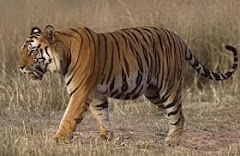.jpg)
Renungan Sang Harimau_Sabaha AnNamiru
.jpg)
Syaraba AnNamiru Ma_A
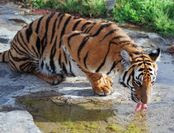.jpg)
AnNamiru_Riadhah
.jpg)
AnNamiru_Riadhah
.jpg)
AnNimru ma_A waladuha
Namir fil_Ghabi (sebut Robi...
Namir

AdDubbu_Beruang di hutan

Amu Syahidan Wa La Tuba lil_A'duwwi

AsSyahid

Namir

Tangkas
najwa dan irah

sungai

najwa

najwa

Kaabatul musyarrafah

unta

Jabal Rahmah

masjid nabawi

masjid quba

dr.eg

najwa dan hadhirah

along[macho]
![along[macho]](https://blogger.googleusercontent.com/img/b/R29vZ2xl/AVvXsEjuMi7D33CmR0_KXrCW2XigfLcUuQurcvtqOS139ncCwEzCyB-jUopk7QK7anADIenJEm2S0N6gAY1ubnACYXewgiAsI3rBjnLTawM39alLL-rEopOoVqn0w5WpLhPJH3hrXNtchEhgtyaI/s240/P7150023.JPG)
harissa dan hadhirah

adik beradik
Tongkat Ali

Tongkat Ali
herba kacip Fatimah
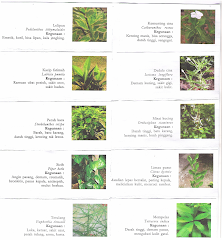
herba Kacip Fatimah
hempedu beruang
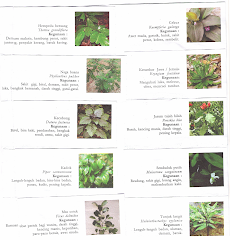
hempedu beruang
hempedu bumi

hempedu bumi
herba misai kucing

herba misai kucing
herba tongkat Ali
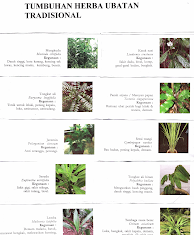.png)
Tongkat Ali
Ulama'

Ulama'
kapal terbang milik kerajaan negara ini yang dipakai pemimpin negara

kapal terbang
Adakah Insan ini Syahid

Syahid
Tok Ayah Haji Ismail

Saifuddin bersama Zakaria

Dinner....
Sukacita Kedatangan Tetamu
Pengikut
Kalimah Yang Baik

Ubi Jaga
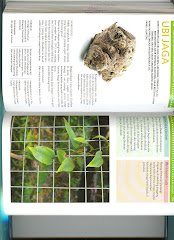
Ubi Jaga
Arkib Blog
Burung Lang Rajawali

Chinese Sparrowhawk
Kelicap Mayang Kelapa
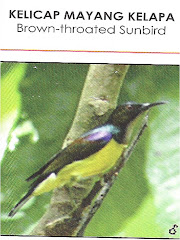
Brown-Throated Sunbird
Kopiah

Pokok Damar Minyak

Kacip Fatimah
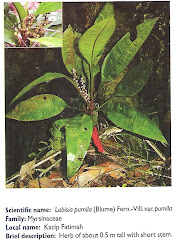
Mengkudu Akar
